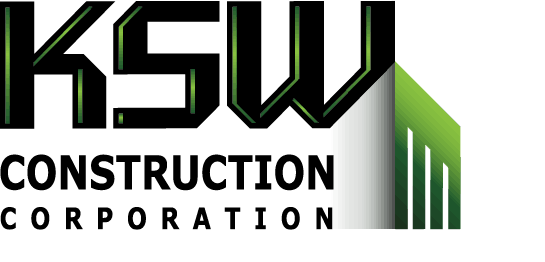Jenkins runs automated Selenium tests as part of a Continuous Integration (CI) or Continuous Supply (CD) pipeline. This permits builders to get feedback on their code adjustments quickly and helps make positive that quality issues are caught early. As soon as the commit occurs, the Jenkins server discovers the modifications and pulls them. The server, whether or not a virtual machine or a naked metallic server, is designed to allow the fewest variety of processes to interface with it. This is achieved utilizing a standard server operating system and networking safety capabilities.
Key Options Of Jenkins
It generates an internet consumer interface in either instance and takes requests to its REST API. When you initially start Jenkins, it generates an administrator account with a prolonged distinctive password, which you may input into the installation’s first web site to unlock. Maintain in mind that read-only Jenkins pictures are accessible within the Docker Hub on-line repository.
Benefits Of Steady Integration (ci)
You leverage a higher degree of automation to allow frequent, secure, and predictable software program releases. One of the bottom ideas of a Jenkins pipeline is phases https://www.globalcloudteam.com/ and steps that management the CI/CD process. The Jenkins Pipeline plugin we’ve been utilizing supports a general steady integration/continuous delivery (CICD) use case, which is probably the most typical use for Jenkins.
Jenkins offers the automation needed for more and smaller companies with sooner update intervals. Fast-forward to 2011, and a dispute between Oracle (which had acquired Sun) and the independent Hudson open source group led to a fork with a name change, Jenkins. In 2014 Kawaguchi became CTO of CloudBees, which presents Jenkins-based steady supply merchandise. Additionally, all fixes made by CloudBees in the open source code are contributed again to the project – which helps us all to take pleasure in an ever-higher quality Jenkins experience. The automated testing phases embed into the CI pipeline in Jenkins seamlessly. Various plugins help run unit, integration, functional, and regression exams and retailer the outcomes for later viewing and analysis.

A step in this context is a specific command that performs a given motion. Upon the profitable completion of every step, the pipeline will proceed to the subsequent one. There are a number of business versions of Jenkins; nevertheless, this definition focuses on the upstream open source Jenkins project.

It is used to repeatedly create and take a look at software initiatives, making it simpler for builders and DevOps engineers to integrate adjustments to the project and for shoppers to get a new build. It also allows you to launch your software program continuously by interacting with numerous testing and deployment methods. Jenkinsfiles may be produced using a graphical person interface (GUI) or manually writing code. It automates each stage of the development course of, from integration to deployment. Each time a developer pushes a change to the supply code repository, it performs a build.
Jenkins is an open source steady integration/continuous supply and deployment (CI/CD) automation software DevOps device written in the Java programming language. Automation is the answer to the challenges in a day’s work for Software Growth. Can you even imagine testing, constructing, and deploying software all by hand? Jenkins is a self-contained, open supply automation server which can be utilized toautomate all types of duties associated to building, testing, and delivering ordeploying software program. Steady integration (CI) is a growth practice where developers combine code right into a shared repository frequently, ideally several times a day.
The Jenkins server can entry the Controller environment, which distributes the workload throughout completely different Jenkins Brokers. Yes, Jenkins is an software tool which is used for the implementation of continuous integration and steady supply (CI/CD) pipelines. As Soon As you might have Jenkins configured, it’s time to create some tasks that Jenkins can construct for you. While you ought to use the online UI to create scripts, the current finest apply is to create a pipeline script, named Jenkinsfile, and check it into your repository. The screenshot under shows the configuration net kind for a multibranch pipeline.
Jenkins’ plugin design allows it to be expanded in nearly any method, giving it virtually limitless capabilities. Jenkins’ community is its backbone, and members have played an important function within the improvement (and testing) of just about 1500 plugins accessible within the Replace Center. In addition, a lack of federation would possibly end in a proliferation of remote Jenkins servers which would possibly be exhausting to handle across a big organization. The neighborhood is quite involved, making it a really efficient CI/CD tool. This is essential if your CSS pipeline saves large recordsdata or complex data to variables in the script.

Jenkins has lately been modified to function in a Docker container. Further, it’s out there as a Net Application Useful Resource (WAR) archive, installation packages for major working methods, Homebrew packages, Docker photographs, and source code. Jenkins could additionally be what is jenkins operated as a server on numerous operating systems, including Windows, macOS, Unix variations, and, most notably, Linux. It additionally runs on the Oracle JRE or OpenJDK and requires a Java eight virtual machine or larger. Jenkins is often executed as a Java servlet inside a Jetty application server, and different Java software servers, similar to Apache Tomcat, can be utilized to run it.
A pipeline is a set of steps the Jenkins server will execute to complete the CI/CD process’s needed tasks. In the context of Jenkins, a pipeline refers to a collection of jobs (or events) linked in a specific order. It is a group of plugins that permit the creation and integration of Continuous Delivery pipelines in Jenkins. Further, it helps manual testing where needed with out switching environments. When code is hosted domestically, it doesn’t all the time work properly when pushed to a central system on a non-public or public cloud.
It helps automate the components of software program growth related to building, testing, and deploying, facilitating continuous integration, and continuous delivery. It is a server-based system that runs in servlet containers similar to Apache Tomcat, or by default as a stand-alone web-application in co-bundled Eclipse Jetty. With Jenkins, organizations can accelerate the software growth course of by automating it. Jenkins manages and controls software delivery processes throughout the complete lifecycle, together with build, doc, check, package, stage, deployment, static code evaluation and much more. It is possible to escalate the software program improvement course of with Jenkins automation. Throughout the life cycle, it helps you manage software delivery processes.
- Jenkins is distributed as a WAR archive and as installer packages for the major operating methods, as a Homebrew package, as a Docker image, and as supply code.
- Jenkins has remained one of the well-liked build/test options for Agile improvement, CI/CD, and DevOps with Jenkins because it is ubiquitous.
- Jenkins Continuous Integration (CI) is the follow of automating the mixing of code modifications from multiple contributors right into a shared repository.
- Jenkins presents safety tools to help organizations keep their information and systems secure, proper out-of-the-box.
- Jenkins describes a desired state, and the automation server ensures it occurs.
After downloading, putting in and running Jenkins, the post-installation setup wizard begins. Therefore, a build is one run of a defined project with numerous steps. A CD pipeline is a sequence of events during which these states work. Each change made to the software program has to move through multiple complicated processes before the release. In Jenkins, you’ll find a way to simply figure out which commit brought on the build’s failure. Nonetheless, if all of the unit checks move, the construct pipeline will transfer ahead to the following stage.
